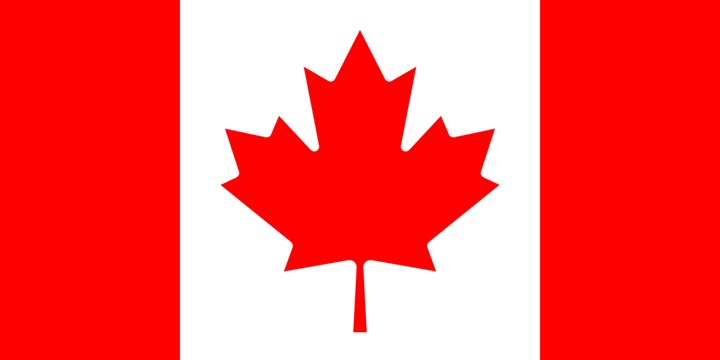
Canada is a vast canvas of natural beauty, offering a diverse array of ecosystems that are home to an impressive variety of wildlife. From the towering Rocky Mountains to the tranquil shores of the Atlantic, the country’s landscapes provide habitats for countless species. The rich biodiversity of Canada is a testament to the country’s commitment to conservation and the preservation of its natural heritage. To truly appreciate Canada’s wildlife and the stunning landscapes that support it, one must delve deeper into the various regions, their ecosystems, and the myriad of species that inhabit them.
The Diverse Ecosystems Of Canada
Canada spans approximately 9.98 million square kilometers, making it the second-largest country in the world. This vast expanse encompasses a multitude of ecosystems, including temperate rainforests, boreal forests, tundra, grasslands, and coastal regions. Each of these ecosystems plays a crucial role in supporting the diverse wildlife that calls Canada home.
Boreal Forests
One of the most significant ecosystems in Canada is the boreal forest, which stretches from the Atlantic to the Pacific coasts. These forests are characterized by coniferous trees, and are home to a variety of wildlife, including the Moose(Alces alces), and the Common Loon(Gavia immer) whose haunting call echoes across the lakes, providing a serene soundtrack to the wilderness.
Rocky Mountains
The Rocky Mountains, which run along the western edge of Canada, are another breathtaking ecosystem. These towering peaks offer stunning vistas and diverse habitats, ranging from alpine meadows to deep valleys. The region is home to iconic wildlife such as the Grizzly Bear(Ursus arctos horribilis), Mountain Goat(Oreamnos americanus), and Elk(Cervus canadensis). The presence of these large mammals is a testament to the rich biodiversity of the Rockies. Banff and Jasper National Parks, are known for their crystal-clear lakes, such as Lake Louise and Moraine Lake.
Coastal Regions
Canada’s coastline stretches over 200,000 kilometers, making it one of the longest in the world. The coastal regions, particularly in British Columbia and Newfoundland, are rich in marine biodiversity. Here, you can find an abundance of marine life, including seals and a variety of fish species. The coastal waters are also a prime habitat for whales, such as the Humpback Whale(Megaptera novaeangliae), Orca(Orcinus orca), and Gray Whale(Eschrichtius robustus).
Tundra
In the far north, the tundra ecosystem presents a stark yet beautiful landscape characterized by permafrost, low vegetation, and extreme weather conditions. This region is home to remarkable wildlife, including the iconic Polar Bear(Ursus maritimus). The Polar Bear, a symbol of the Arctic, roams the icy landscapes of Hudson Bay, relying on sea ice to hunt seals.
The tundra also serves as a breeding ground for various migratory birds, including the Arctic Tern(Sterna paradisaea) and the Snow Bunting(Plectrophenax nivalis). The seasonal changes in the tundra bring a burst of life during the short summer months, when flowers bloom and animals become more active.
The Role Of National Parks In Conservation
Canada is home to over 40 national parks and national park reserves; these parks are vital for conservation efforts, providing protected areas for wildlife and preserving natural ecosystems.
Banff National Park
Banff National Park, established in 1885, is Canada’s first national park. The park is known for its stunning mountain scenery, glacial lakes, and abundant wildlife. The Black Bear(Ursus americanus) is one of the many mammals that lives in Banff.
Jasper National Park
Jasper National Park, located just north of Banff, is another gem in the Canadian Rockies. Known for its dark skies, Jasper is a designated Dark Sky Preserve. The park is also home to a diverse range of wildlife, including the Gray Wolf(Canis lupus), Bighorn Sheep(Ovis canadensis), and Red Fox(Vulpes vulpes).
The Importance Of Conservation
As we explore the untamed beauty of Canada, it is essential to recognize the importance of conservation efforts in protecting these natural treasures. Human activities, such as habitat destruction and pollution pose significant threats to wildlife and ecosystems.
Canada has made strides in conservation, with initiatives aimed at protecting endangered species and restoring habitats. Organizations and government agencies work collaboratively to ensure that wildlife populations remain stable and that ecosystems are preserved. However, continued efforts are necessary to address the ongoing challenges facing Canada’s natural heritage.
Conclusion
Canada’s untamed beauty is a treasure trove of natural wonders, offering breathtaking landscapes and diverse wildlife that inspire awe and appreciation. From the boreal forests of the north to the coastal regions and the majestic Rocky Mountains, each ecosystem plays a vital role in supporting the rich biodiversity of the country.
